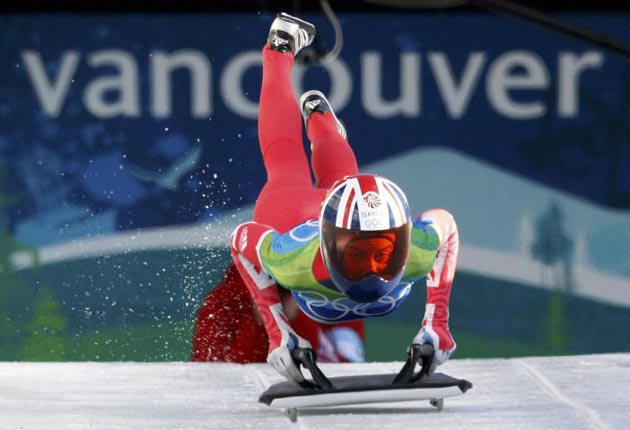James Lawton: Burns and bruises all part of building Williams' golden sled

Your support helps us to tell the story
From reproductive rights to climate change to Big Tech, The Independent is on the ground when the story is developing. Whether it's investigating the financials of Elon Musk's pro-Trump PAC or producing our latest documentary, 'The A Word', which shines a light on the American women fighting for reproductive rights, we know how important it is to parse out the facts from the messaging.
At such a critical moment in US history, we need reporters on the ground. Your donation allows us to keep sending journalists to speak to both sides of the story.
The Independent is trusted by Americans across the entire political spectrum. And unlike many other quality news outlets, we choose not to lock Americans out of our reporting and analysis with paywalls. We believe quality journalism should be available to everyone, paid for by those who can afford it.
Your support makes all the difference.Behind the gloriously uncomplicated triumph of Britain's world-beating skeleton gold medallist Amy Williams is an equally extraordinary story of determination, this one involving the design brilliance of another 27-year-old, Rachael Blackburn.
She will soon have her own tangible reward – a doctorate in engineering design entitled: How to build an Olympic-winning sled.
Blackburn, a postgraduate engineering student at Southampton University, sums up the success of a project costing hundreds of thousands of pounds, with impressive brevity.
She explains: "Four years ago I started an engineering doctorate at Southampton for a skeleton programme. We didn't know what we were going to do then. It was down to the sport to decide on the questions they needed answering. About six months later they said, 'We need a sled.' So we made a sled. That's pretty much it."
In fact, there was rather more to it, and some of it controversial in that Williams' team-mate and fierce rival Shelley Rudman was operating on a sled designed by her partner Kristan Bromley – one that the couple had been promoting for some time.
The rival project, sponsored by UK Sport, was named Blackroc – a combination of the surnames of Blackburn and her co-designer James Roche, who is also a post-graduate student at Southampon.
Blackburn said: "I think the difference is that our sled is purely for UK Sport, they're more commercial.
"I knew nothing about the sport. I came at it purely from an engineering point of view. I thought: 'What's out there and how can we make it better?' There were existing sleds that we could modify, but there was too much to modify – and we decided to start from scratch.
"It's the balance between the stiffness of the chassis for speed versus the sensitivity of the control. If you can't get the lines but you have the speed you're going to crash. What you have to achieve is the fine balance for every individual.
"I've had many dreams – and many nightmares. We came up with some concept designs and before anything was made we went and got approval and more suggestions from McLaren and Prodrive [the British automotive engineering group] and they said, 'Go for it.'
"From that point on we had more belief. It took a bit of tweaking. We sent them [the skeleton riders] down on some antique sleds from before their time and got them to test how things had changed. They got a few bruises and some ice burns but we knew where we had to go."
Indeed, they took the fast track to a stunning coup which rocked the most powerful Alpine sport nations and led, out of the deepest and most aimless frustration, to piffling challenges from the Americans and the Canadians to the design of Williams' helmet. Both protests were thrown out by the jury with some contempt.
Williams' coach, the former world champion Austrian Mickey Gruenberger, was emphatic that, above all, it was triumph for the rider's skill and nerve – but there was no doubt about the value of her design support.
Gruenberger said: "If you want to win a medal everything has to stick together. You have to have the right equipment – you have to have the right athlete. You see in Formula One, Michael Schumacher is not able to win with a Minardi. It's quick but it is limited when compared to a Ferrari."
Gruenberger's work has also drawn the envy of the powerhouse nations, including his native Austria. He has already received one overture but it is expected that an improved British contract will keep him in place. He said: "I'm not Mourinho, but I still have to pay my bills."
There is no doubt, though, about the status of the achievement here. It is, everyone agrees, a special one.
Join our commenting forum
Join thought-provoking conversations, follow other Independent readers and see their replies
Comments